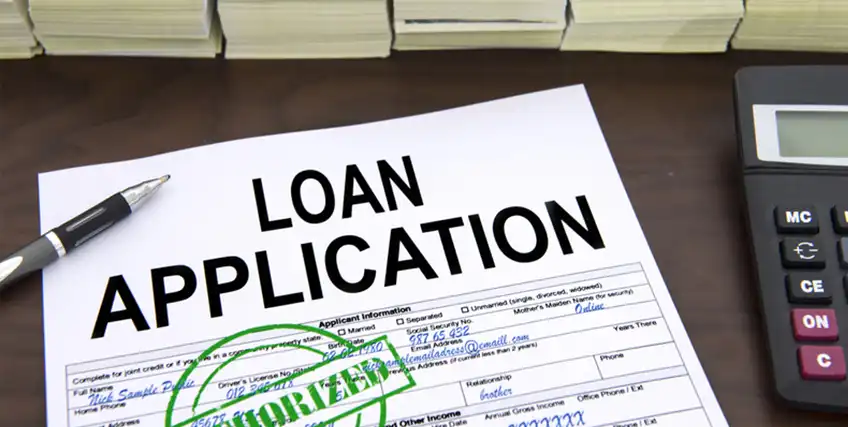Everything Small Business Owners Need to Know About the Loan Application Process
January 14, 2025 | Last Updated on: January 14, 2025

Securing a loan is often a crucial step for small business owners to fund growth, cover operational costs, or make strategic investments. However, the loan application process can be daunting without proper knowledge. Here's a comprehensive guide on everything small business owners need to know about how to get approved for a loan:
1. Getting a Loan: Understand Your Options
Before diving into the loan application process, it's important to understand the types of loans available. Some common options for small businesses include:
- Term Loans: A lump sum paid back over a set period with interest. These loans are ideal for major investments like equipment or expanding your facilities.
- SBA Loans: Loans backed by the S. Small Business Administration (SBA), typically with favorable terms, lower interest rates, and longer repayment periods.
- Business Lines of Credit: Similar to a credit card, you can borrow money as needed, up to a set limit, and only pay interest on the amount you use.
- Equipment Financing: Loans designed specifically for purchasing or leasing equipment.
- Invoice Financing: A type of funding where you sell your accounts receivable to a lender in exchange for immediate cash.
- Microloans: Smaller loans offered by nonprofit organizations or certain lenders to startups and very small businesses.
Each loan type has its own qualifications, terms, and repayment structures. Choose the one that best suits your business needs.
2. Check Your Creditworthiness
Your credit score and the overall financial health of your business will play a significant role in how to get approved for a loan. Lenders use your credit history to gauge the risk of lending you money.
Key credit-related factors include:
- Personal Credit Score: Many small businesses, especially startups, rely on the personal credit of the owner, as the business might not have established credit yet.
- Business Credit Score: This is different from your personal score and is based on your business's financial history.
- Debt-to-Income Ratio: This ratio helps lenders determine your ability to repay loans by comparing your existing debt to your income.
If your credit score is low, it might be worth working on improving it before applying for a loan. You may also want to consider alternative financing options if your credit is not strong.
3. Prepare Your Financial Documentation
Lenders will require detailed financial information to evaluate your business’s ability to repay a loan. Be prepared to provide the following documents:
- Tax Returns: At least two years' worth of business tax returns (and personal returns if applicable).
- Financial Statements: Balance sheets, income statements, and cash flow statements. These documents will help lenders assess your profitability and financial health.
- Business Plan: A comprehensive business plan outlining your goals, financial projections, and how the loan will be used.
- Bank Statements: Lenders may ask for recent bank statements to see how much cash you have on hand.
- Legal Documents: Your business's legal structure (LLC, corporation, sole proprietorship, etc.) and any licenses or permits.
- Collaterals: For secured loans, be ready to provide information about any assets you can pledge (e.g., property, equipment, inventory).
4. Determine Your Loan Amount and Terms
Before applying, decide on the amount you need and the repayment terms that fit your business's financial situation. Consider:
- Loan Amount: Only borrow what you need to meet your objectives. Borrowing too much can lead to unnecessary debt, while borrowing too little may not provide enough capital to reach your goals.
- Repayment Terms: Understand how long you’ll have to repay the loan, the interest rate, and any fees associated with the loan. Ensure the terms are manageable based on your cash flow.
5. Understand Interest Rates and Fees
Interest rates and fees can vary widely depending on the type of loan, the lender, and your creditworthiness. Some points to consider:
- Interest Rate: This is the cost of borrowing money and is typically expressed as an annual percentage rate (APR). A lower rate is better for your business’s financial health.
- Origination Fees: Many lenders charge a one-time fee to cover the costs of processing the loan.
- Prepayment Penalties: Some loans may have penalties if you pay off the loan early.
- Late Fees: Always check what happens if you miss a payment, as this could add extra costs to your loan.
6. Research Lenders and Compare Options
Different lenders offer different terms and conditions. Some places to consider when searching for a loan include:
- Banks and Credit Unions: Traditional lenders that offer competitive interest rates but often have strict requirements.
- Online Lenders: Online platforms may have faster application processes but might charge higher rates.
- Community Development Financial Institutions (CDFIs): These nonprofit organizations focus on lending to underserved businesses and may have more flexible requirements.
- Peer-to-Peer Lenders: Individuals who lend money directly to businesses in exchange for interest.
Do thorough research to compare the APR, repayment terms, and customer reviews of each lender before making your decision.
7. Consider Your Ability to Repay
A key part of the loan application process is demonstrating that you will be able to repay the loan. Be sure to:
- Evaluate your cash flow: Ensure you have enough income coming in to cover the monthly loan payments.
- Stress-test your projections: Consider what would happen if your business faces unforeseen challenges (economic downturn, loss of a major client, etc.).
- Create a contingency plan: If your business experiences a cash flow shortfall, how will you handle it?
Lenders want to know that you can pay back the loan on time and without issue. Part of the consideration for getting a loan is being able to prove that you’ll be able to pay it back.
8. The Loan Application Process
The actual loan application process can vary by lender, but it generally involves the following steps:
- Application Submission: Submit your financial documents, business plan, and any other required materials.
- Review Process: The lender will review your application, run a credit check, and assess your financials.
- Approval: If you're approved, the lender will offer you a loan agreement outlining the terms.
- Acceptance: If you accept the terms, you sign the agreement and receive the funds.
Some lenders may also ask for additional documentation or clarification before they approve the loan.
9. Loan Repayment Strategy
Once you’ve received the loan, it’s crucial to have a strategy for repaying it on time. Some tips include:
- Set aside funds: Create a separate account to set aside money for your loan payments.
- Stick to your budget: Make sure your monthly expenses and loan repayments are in line with your cash flow projections.
- Stay in communication with your lender: If you anticipate any issues with payments, communicate early with your lender to negotiate a solution.
10. Evaluate the Impact on Your Business
After the loan is repaid, review the process to determine its impact on your business:
- Did it help you meet your goals? Evaluate whether the loan led to the growth or improvements you were expecting.
- Were there any challenges? Look for areas of the loan application process or repayment that could have been smoother.
- Would you apply again? Consider whether the loan was worth the time, money, and effort.
Conclusion
Applying for a business loan can be a game-changer, but it’s crucial to approach the process with preparation, understanding, and caution. By knowing what type of loan best suits your business needs, maintaining good credit, gathering the necessary documentation, and carefully choosing a lender, you’ll be in a stronger position to secure getting a loan.
FAQs About the Loan Application Process
What are the steps to getting approved for an SBA loan?
SBA loan requirements vary depending on the type of loan you apply for and the lender. Getting through the application process can be a challenge, but here is a step-by-step guide.
Are there non-profit loans for small businesses?
Community Development Financial Institutions (CDFIs) are nonprofit organizations focusing on lending to underserved businesses and may have more flexible requirements.
How many years of tax returns do you need for the loan application process?
The lending process can vary from business to business. However, most small businesses require at least two years' worth of business tax returns (and personal returns if applicable).
What are the downsides of bank loans?
Traditionally, banks have strict loan application requirements. Bank loans also may take longer than other applications to get approved.
Frequent searches leading to this page
getting a loan, how to get approved for a loan, get approved for a loan, loan application
Recent Articles
Related Articles

Everything Small Business Owners Need to Know About the Loan Application Process
January 14, 2025


